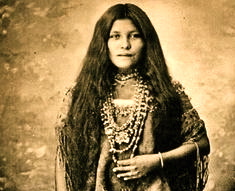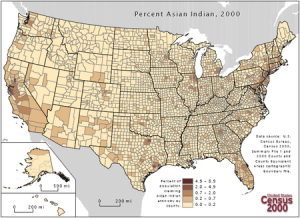Indian Americans

Indian Roots, American Soil: Adding Value to U.S. Economy and Society
For many Indian companies, international expansion constitutes an integral part of their overall growth strategy today. Through green-field ventures, collaborative partnerships, investments and most significantly, through mergers and acquisitions, Indian companies have experienced robust growth, which forms the bedrock of furthering business ties, fueling economic development and improving the quality of lives globally. India’s increasing integration with the global economy is evident in its burgeoning outflows of Foreign Direct Investment over the past decade. According to the Reserve Bank of India, the United States stands among the top five destinations of Indian investments made overseas. While business cooperation between India and the United States predates India’s independence, it was only much after economic liberalization, in mid-1990’s, that Indian companies seriously began looking for commercial opportunity in the U.S. In fact, Indian companies are still rather young in the U.S. market, having established operations, on average, only about 18 years ago!
According to the 2010 United States Census, the Asian Indian population in the United States grew from almost 1,678,765 in 2000 (0.6% of U.S. population) to 2,843,391 in 2010 (0.9% of U.S. population), a growth rate of 69.37%, one of the fastest growing ethnic groups in the United States.
Indian Americans are citizens of the United States of Indian ancestry and comprise about 3.18 million people, or ~1.0% of the U.S. population, the country’s third largest self-reported Asian ancestral group after Chinese Americans and Filipino Americansaccording to American Community Survey of 2010 data. The U.S. Census Bureauuses the term Asian Indian to avoid confusion with the indigenous peoples of the Americas commonly referred to as American Indians.
History – The term: Indian
In North America, the term Indian has an ambiguous meaning. In the western hemisphere (mainly North and South America), historically and currently, Indian has been commonly used to refer to the indigenous peoples of the Americas. Qualifying terms such as American Indian and East Indian were and are commonly used to avoid ambiguity.
While East Indian remains in use, South Asian is often chosen instead. The U.S. government coined Native American to refer to the indigenous peoples of the United States, but American Indian remains popular among the indigenous and general populations.
People of Indian origin often prefer the term Desi to refer to the diasporic subculture of South Asians. Indian Americans are categorized as Asian Indian (and more broadly, Asian American) by the United States Census Bureau.
Arrival in the U.S.
It was after the Luce–Celler Act of 1946 that Indian Americans were restored naturalization rights in the United States. A number of Indian Americans came to the U.S. via Indian communities in other countries such as the United Kingdom and Canada, in both of which 2% of the population is currently of Indian origin, Mauritius, nations of Southeast Asia such as Malaysia and Singapore, South Africa, Suriname, Guyana, Fiji, Kenya, Tanzania, Uganda, Trinidad & Tobago, and Jamaica.
http://en.wikipedia.org/wiki/Indian_American


